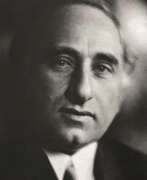Interior designers Modern art
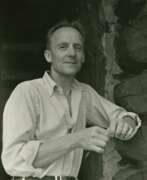

Wharton Esherick is an American artist and sculptor known for his innovative and organic approach to woodworking. He is considered one of the pioneers of the American studio furniture movement and is known for his sculptural furniture, functional objects and architectural woodworking.
Esherick's creative journey led him to experiment with various mediums, including painting, printmaking and sculpture, but it was his work in woodworking that brought him the most recognition.
Esherick developed a distinctive style characterized by organic forms, sculptural detailing and an emphasis on the natural qualities of wood. He believed that furniture design should reflect the inherent qualities of the materials used. Esherick adhered to the concept of "truth of materials", allowing wood to guide his artistic process and shape the final form of his creations.
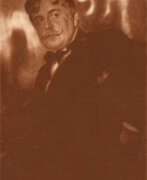

Aleksandr Yakovlevich Golovin (Russian: Алекса́ндр Я́ковлевич Голови́н) was a distinguished Russian artist and stage designer, celebrated for his vibrant and ornate creations in the realms of theatre and fine arts. Born in Moscow in 1863, Golovin initially pursued architecture before shifting his focus to painting, a move that enriched Russian art with his unique blend of symbolism and modernism. His academic journey took him from the Moscow School of Painting, Sculpture and Architecture to the Académie Colarossi in Paris, marking the beginning of a prolific career that intertwined Russian heritage with avant-garde European influences.
Golovin's artistic signature is evident in his stage designs for prominent figures like Sergei Diaghilev, Constantin Stanislavski, and Vsevolod Meyerhold. His work for the original production of Stravinsky's "The Firebird" ballet and the scenic design for Beaumarchais's "The Marriage of Figaro" at the Moscow Art Theatre showcases his ability to blend visual splendor with dramatic storytelling. Beyond the theatre, Golovin's paintings, such as portraits of Fyodor Chaliapin and Vsevolod Meyerhold, and works like "Porcelain and flowers" and "Silver willows," display his mastery over color and form, capturing the essence of Russian culture and the beauty of the natural world.
A figure of national pride, Golovin was honored as a People's Artist of the RSFSR, a testament to his significant contribution to Russian art and culture. His legacy continues to inspire, with his works preserved in the Russian Museum among other collections, serving as a testament to his enduring influence on Russian artistic expression.
For collectors and experts in art and antiques, Aleksandr Yakovlevich Golovin represents a pivotal figure in the evolution of Russian visual arts and stage design. His contributions to both fields remain invaluable, reflecting a unique blend of cultural heritage and innovative artistry. For updates related to Golovin, including new product sales and auction events, signing up for updates offers an exclusive insight into the world of this remarkable artist.


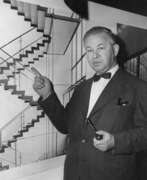

Arne Emil Jacobsen is a Danish architect and designer, the founder of the Danish Functionalism style.
He studied at the School of Architecture at the Royal Danish Academy of Fine Arts, and began working as an architect in the 1930s. Inspired by Art Nouveau, he designed several public buildings, including the Aarhus City Hall. In collaboration with Flemming Lassen, he first created a comprehensive overall interior design, including furniture, fixtures, plumbing and other details. After World War II, Arne Jacobsen made a name for himself both in Denmark and around the world.
For six decades, Arne Jacobsen was at the forefront of Danish architecture, creating visionary works of architecture that still look contemporary today. His projects often included both the building itself and the overall interior design as well as the design of the surrounding landscape. The combination of architecture and design is one of the constant characteristics of Arne Jacobsen's work. In projects such as the SAS Royal Hotel (1960) and St. Catherine's College in Oxford (1964), he not only created the architecture, but also designed every detail of the interiors, turning them into a true work of art.
In addition to architectural structures, Arne Jacobsen created a number of highly original chairs and other furniture. From his studio came avant-garde and innovative furniture, lamps, patterns, clocks, cutlery and glassware that are still in demand today.


Gustav Klimt, an Austrian Symbolist painter, was a central figure in Vienna's Secession movement, known for his paintings, murals, sketches, and objets d'art. Born on July 14, 1862, in Baumgarten near Vienna, Klimt's early life was marked by financial hardship, but he showed artistic talent at a young age. He studied at Vienna's Kunstgewerbeschule, where he received a conservative education in architectural painting that influenced his early traditional works.
Klimt's path as an artist was evolutionary and controversial. Initially a successful painter of architectural decorations, his style evolved into a more personal and controversial form, especially after public criticism of his works for the Great Hall of the University of Vienna in 1900, which were deemed pornographic. This turning point led him to abandon public commissions and begin the so-called "golden period," characterized by the use of gold leaf in his work. Some of his most famous paintings, such as The Kiss and Portrait of Adele Bloch-Bauer I, which demonstrate a combination of Byzantine influence and modern symbolism, belong to this phase.
An important aspect of Klimt's career was his participation in the Vienna Secession, an art movement he co-founded in 1897. This movement, which had no manifesto, aimed to showcase unconventional artists and to bring foreign artistic influences to Vienna. Klimt was its first president and participated in the creation of the periodical Ver Sacrum.
Despite his artistic fame, Klimt led a relatively withdrawn lifestyle, often working alone and maintaining discreet personal relationships. Nevertheless, his legacy remains strong: his works fetch high prices at auction and continue to be celebrated for their innovative style and symbolic depth.
For collectors and art experts, Klimt's work represents a fascinating exploration of the evolution of Symbolism and Art Nouveau. His unique approach to form, color, and subject matter makes his work highly valued and constantly relevant in the art world.
If you are interested in keeping up to date with sales and auction events related to the works of Gustav Klimt, we recommend signing up for updates. This will ensure that you don't miss the opportunity to own a piece of this remarkable artist's history.


Sergey Vasilyevich Malyutin (Russian: Сергей Васильевич Малютин) was a distinguished Russian painter, architect, and designer, celebrated for his multifaceted contributions to the world of art and design. Born in Moscow in 1859 to a merchant family, Malyutin's artistic journey began after an exhibition by the Peredvizhniki inspired him to pursue art. His formal education at the Moscow School of Painting, Sculpture and Architecture honed his talents, leading to a diverse career that spanned painting, set design for operas and ballets, and architectural endeavors.
Malyutin is perhaps best known internationally for designing the first matryoshka doll in 1890, a seminal work that has become an iconic symbol of Russian culture. His involvement in the Arts and Crafts Movement influenced his work, integrating traditional Russian folk motifs into his designs and paintings. Notably, his architectural designs, including the Church of the Holy Spirit in Talashkino and the Pertsov House in Moscow, showcase his dedication to the Russian Revival movement, blending fantastic folk motifs with architectural creativity.
Throughout his career, Malyutin also played a significant role in education, teaching at the Moscow School of Painting, Sculpture and Architecture and advocating for Socialist Realism. His contributions to Russian art were not limited to his creations; he was instrumental in founding the Association of Artists of Revolutionary Russia, emphasizing the importance of art in societal development.
For those interested in exploring the legacy of Sergey Malyutin, his works offer a window into the fusion of traditional Russian art with the innovative currents of his time. Collectors and experts in art and antiques will find his contributions to Russian arts and crafts, especially his role in the creation of the matryoshka doll, to be of particular interest.
To stay updated on exhibitions and auction events featuring Sergey Vasilyevich Malyutin's work, sign up for updates. This subscription is an invaluable resource for enthusiasts looking to deepen their understanding of Malyutin's impact on Russian art and design.
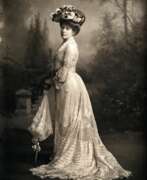

Gwendoline Maud Syrie Maugham was a leading British interior decorator of the 1920s and 1930s who popularized rooms decorated entirely in white.
Although she made her fortune and fame with her white decors, by the mid-1930s she had largely given up the white decors to create interiors with baroque accessories and colour schemes punctuated by bright green, shocking pink, and bold reds.
Maugham's glamorous rooms influenced almost every designer.


Bernhard Pankok, full name Bernhard Wilhelm Maria Pankok, was a German painter and graphic artist, designer, applied artist and architect of the Art Nouveau period.
After acquiring skills as a painter and restorer, Bernhard Pankok studied painting at the Düsseldorf Academy of Fine Arts, then in Berlin. In 1892, he began working in Munich in his own painting studio, doing illustrations for the magazines Pan and Jugend, among others. Pancock was one of the founders of the Munich Association of Art Craft Workshops.
In 1897, Pankok began designing furniture and exhibited his work at numerous exhibitions, including the landmark 1900 "Universal and International Exposition" in Paris. In the same year the art historian Konrad Lange commissioned Bernhard Pancock to design the Haus Lange for him; he worked extensively as an architect in general and designed other buildings in Stuttgart. Pankok was prolific and versatile: he designed sets for opera stages and salons for ocean liners and even the passenger cabins of zeppelins, worked as an architect, furniture designer, interior decorator, painter and graphic artist.
In 1907, he co-founded the Deutsche Werkbund. In 1901 he was invited to teach at the Royal Training and Experimental Workshop in Stuttgart; in 1913 he became its head and in that capacity merged it with the School of Arts and Crafts.


Charlotte Perriand was a French architect and designer. Her work aimed to create functional living spaces in the belief that better design helps in creating a better society. In her article "L'Art de Vivre" from 1981 she states "The extension of the art of dwelling is the art of living — living in harmony with man's deepest drives and with his adopted or fabricated environment." Charlotte liked to take her time in a space before starting the design process.


Gaetano Pesce is an Italian architect and a design pioneer of the 20th century. Pesce was born in La Spezia in 1939, and he grew up in Padua and Florence. During his 50-year career, Pesce has worked as an architect, urban planner, and industrial designer. His outlook is considered broad and humanistic, and his work is characterized by an inventive use of color and materials, asserting connections between the individual and society, through art, architecture, and design to reappraise mid-twentieth-century modern life.
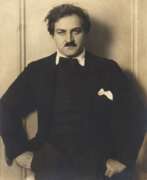

Fritz Winold Reiss is an American portrait painter and graphic designer who emigrated from Germany. His father Fritz Reiss and brother Hans Reiss were also artists. Winold Reiss is known for his many portraits of Native American figures of the Harlem Renaissance and common people. He also created murals that are placed in public places in Cincinnati, as well as interior design.
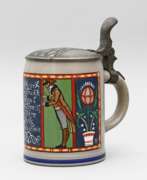

Franz Ringer is a German painter, graphic designer and sculptor.
Franz Ringer came from an old Munich family of carpenters. At the age of 20 he traveled to Tyrol and Switzerland, enrolled at the Technical University of Aachen, returned to Munich and worked as an assistant to the sculptor Josef von Kramer (1841-1908) for ten years, which shaped him as a master stylistically and technically.
Ringer was one of the best-known decorative arts artists in Munich at the time, and he artistically designed many restaurants in Bavaria and in Munich. His design projects are extremely varied.
Franz Ringer is also known as the creator of stone and glass beer mugs, which he painted in Art Nouveau, Art Deco or Biedermeier style. The first Ringer mugs to go into production were made by Villeroy & Boch in 1905. These mugs quickly became popular with the public, especially at scheduled conferences and festivals. Ringer worked for many ceramic manufacturers in Germany. In addition to Villeroy & Boch, these included Reinhold Merkelbach, Merkelbach & Wick, Marzi & Remi, Albert Jakob Thewalt and others.


Frank Lloyd Wright Jr., commonly known as Lloyd Wright, was an American architect, active primarily in Los Angeles and Southern California. He was a landscape architect for various Los Angeles projects (1922-24), provided the shells for the Hollywood Bowl (1926-28), and produced the Swedenborg Memorial Chapel (or Wayfarers Chapel) at Rancho Palos Verdes, California (1946-71). His name is frequently confused with that of his more famous father, Frank Lloyd Wright.
